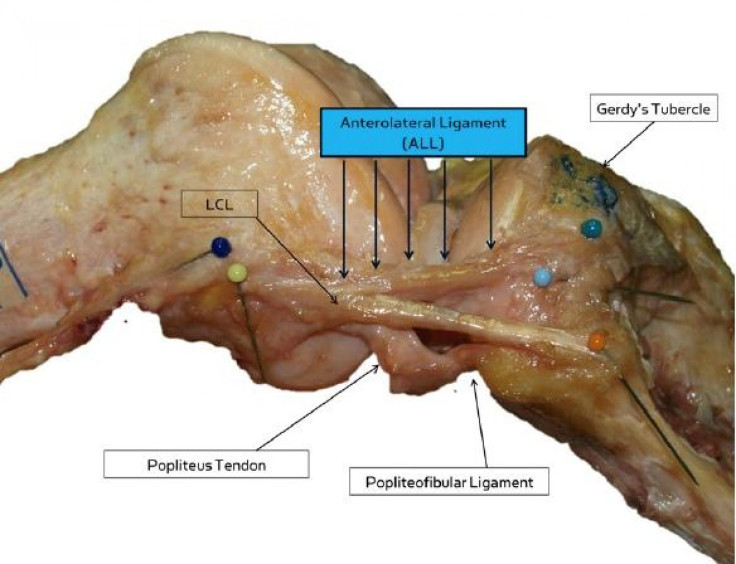New Ligament Discovered In Human Knee, 'Anterolateral Ligament' May Play Role In ACL Tears [PHOTO]

A newly discovered ligament in the human knee has been identified by two orthopedic surgeons at the University Hospitals Leuven in Belgium.
The previously unidentified ligament, named anterolateral ligament, or ALL, was found in a broad cadaver study using macroscopic dissection techniques and may play an important role in individuals with anterior cruciate ligament (ACL) tears.
“The ALL was found to be a distinct ligamentous structure at the anterolateral aspect of the human knee with consistent origin- and insertion-site features,” researchers write in the study published in the Journal of Anatomy. “Given its structure and anatomic location, the ALL is hypothesized to control internal tibial rotation and thus to affect the pivot shift phenomenon, although further studies are needed to investigate its biomechanical function.”
Orthopedic surgeons Dr. Steven Claes and Professor Dr. Johan Bellemans had a hunch about the new knee part after studying a 1879 article by a French surgeon that hinted at the existence of a “pearly, resistant, fibrous band” on the anterior of the human knee.
The newly discovered ALL ligament was present in 97 percent of the 41 human knees examined and may explain why some people experience a “pivotal shift” after an ACL injury. According to the new study, when patients experience a “pivotal shift” or giving way of their knee after an ACL tear, the ALL is usually injured, which causes the phenomenon.
The Anatomical Society has called the discovery “very refreshing” and lauded the researchers for highlighting how there is still more to learn about basic human anatomy.
The ACL, one of the four main ligaments in the knee, is connected to the femur and the tibia. It is a hinged joint that runs diagonally in the middle of the knee, preventing the tibia from sliding in front of the femur. According to the American Academy of Orthopedic Surgeons, ACL injuries are typically caused by activities that involve pivoting, sidestepping, awkward landings or “out of control” play. Surgery is usually advised where a graft made of the tendon is used to replace the ACL.
© Copyright IBTimes 2024. All rights reserved.












